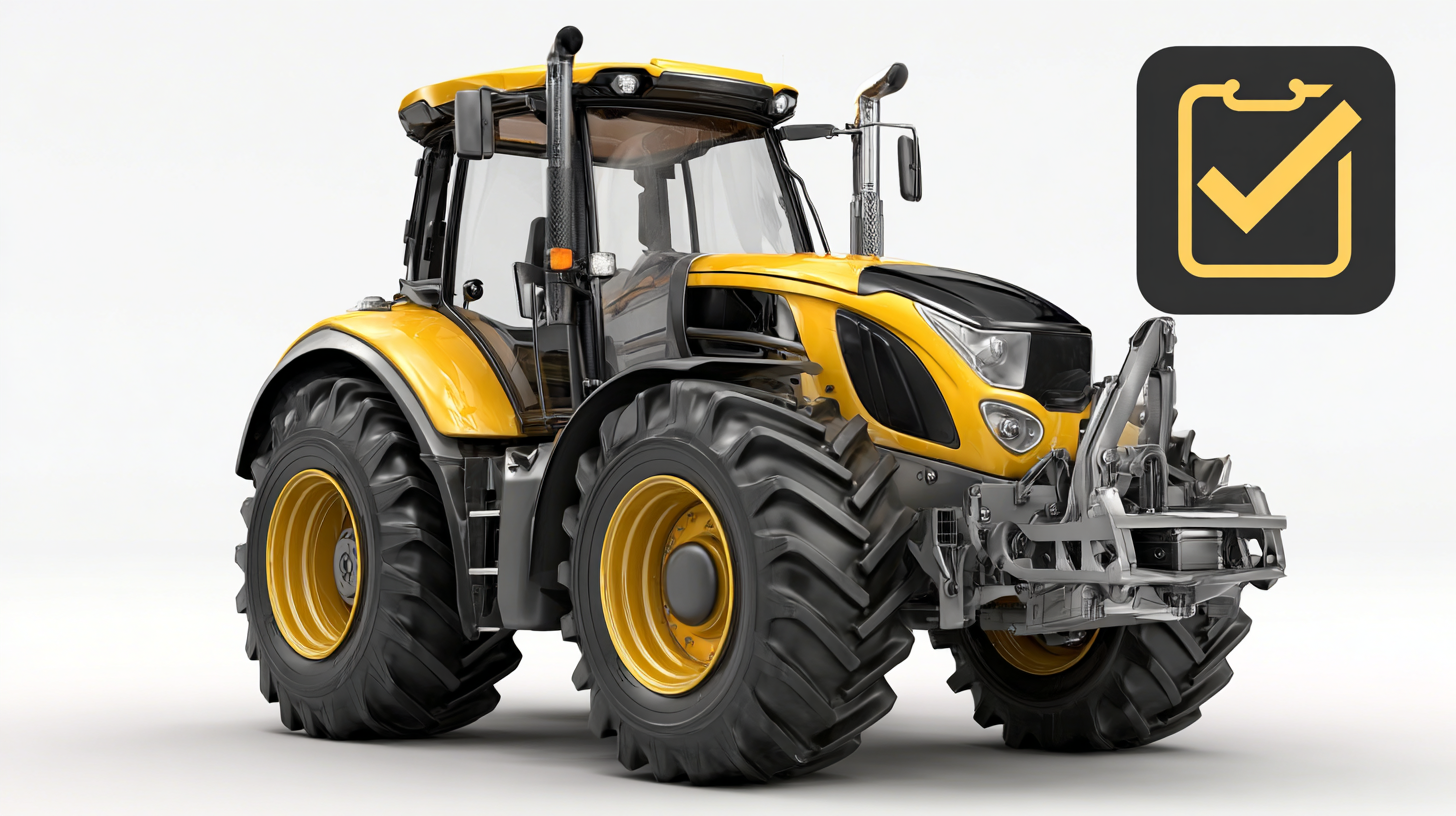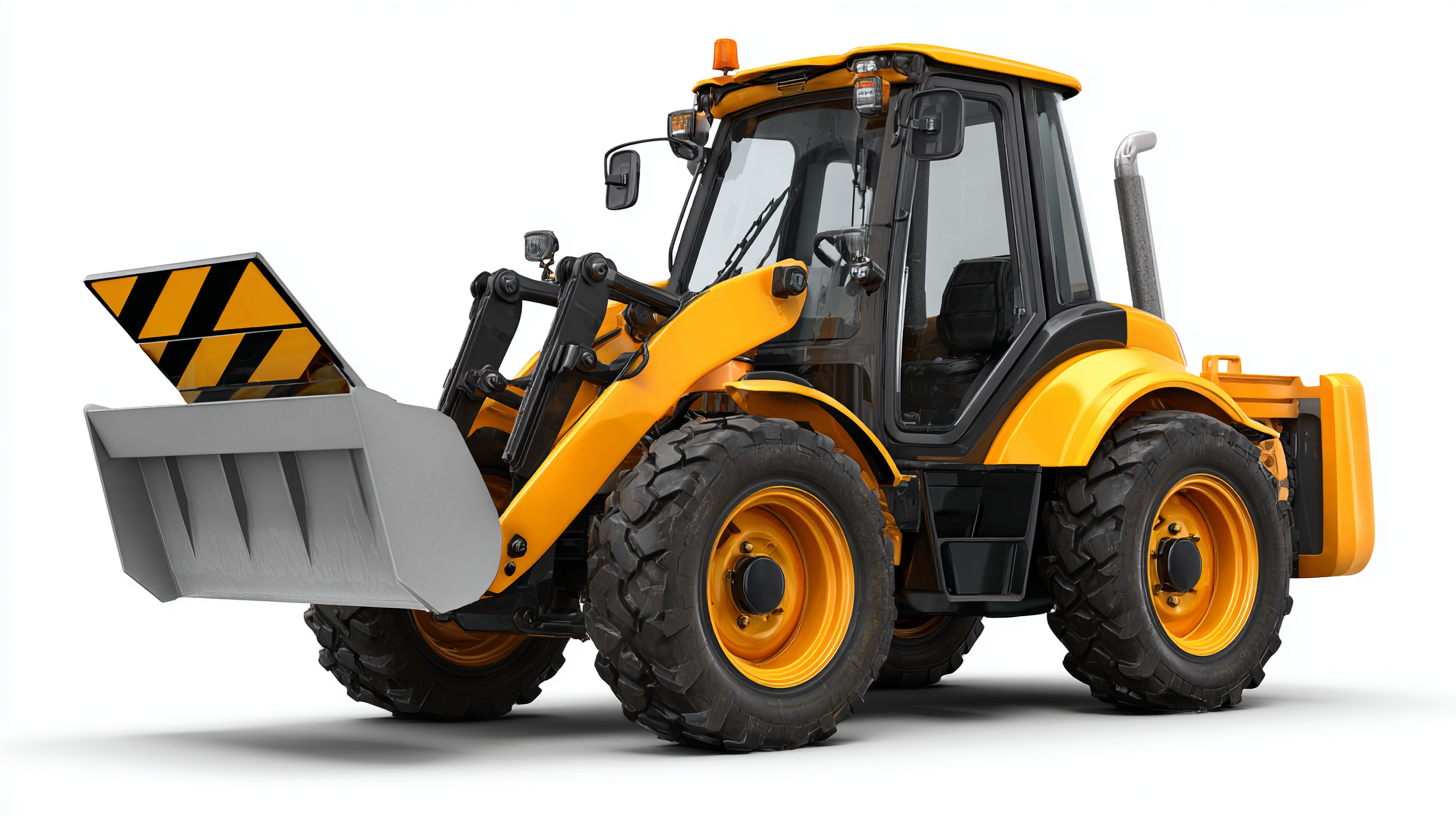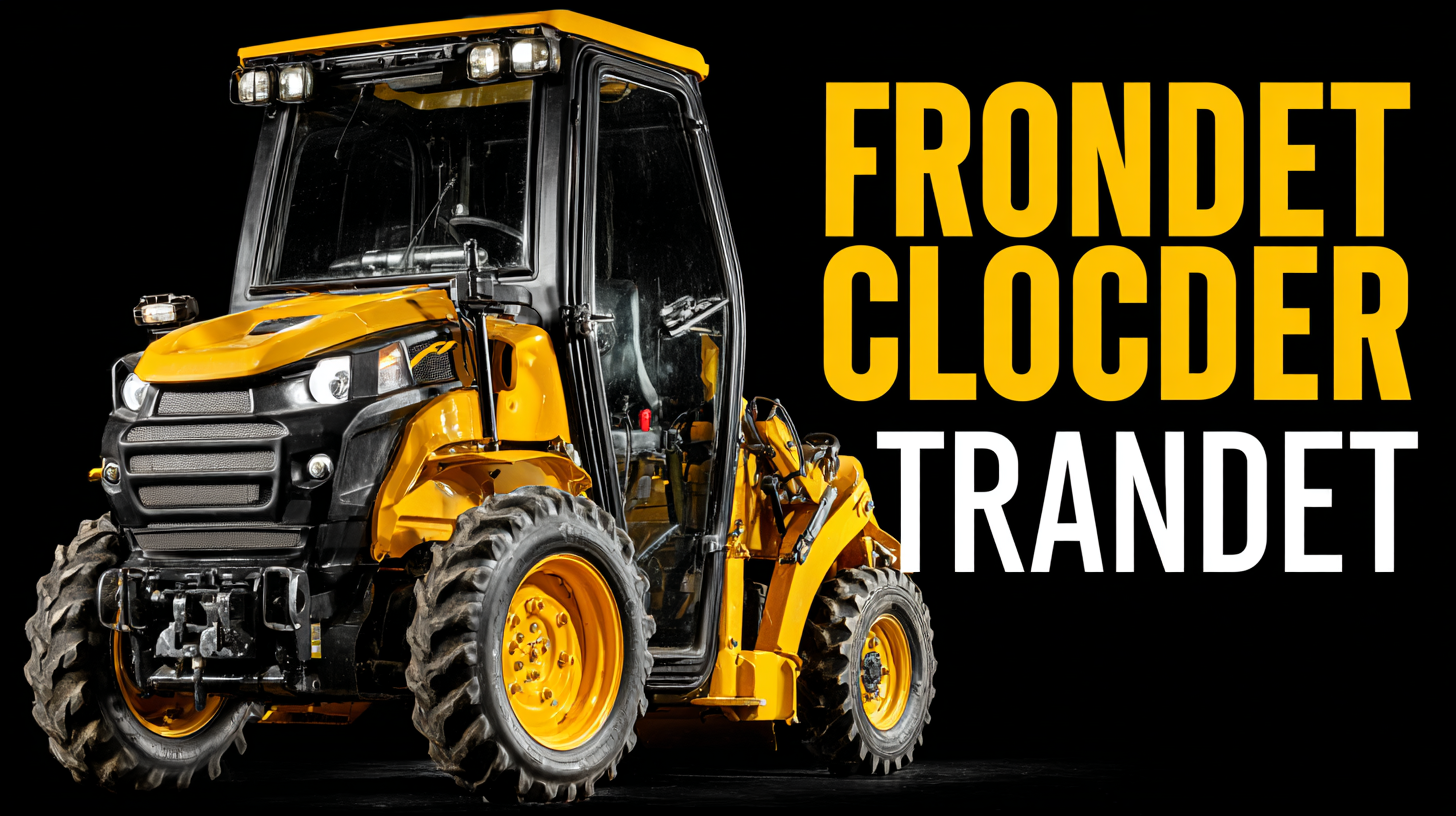As the global agricultural machinery market continues to expand, with a projected growth rate of 7% annually, the demand for versatile and efficient equipment such as the small front loader tractor is on the rise. These compact machines are crucial in a variety of applications ranging from landscaping to small-scale farming, allowing operators to maximize productivity and efficiency in tighter spaces. According to a recent report by MarketsandMarkets, the increasing focus on sustainable farming practices is driving the adoption of smaller, more efficient tractors that can easily navigate varied terrains while reducing soil compaction.

Selecting the best small front loader tractor to meet specific operational needs is essential for farmers looking to enhance their productivity and maintain a competitive edge in the ever-evolving market. As such, understanding the key features, capabilities, and overall value of these tractors is imperative for making an informed investment that aligns with both current and future requirements.
When selecting a small front loader tractor, it's crucial to focus on key factors that align with your specific needs. Firstly, evaluate the horsepower and size of the tractor to ensure it can handle the tasks you plan to undertake, whether it's landscaping, farming, or general maintenance. The lifting capacity is equally important; you'll want a tractor that can efficiently manage the load you expect to move. The type of attachments the tractor can accommodate also plays a significant role in versatility, enabling you to switch between tasks effectively.
Another critical consideration is the tractor's maneuverability and ease of operation. A compact design can be advantageous when working in tighter spaces, allowing for greater precision and control. Don't forget to also assess the build quality and reliability of the tractor; this will impact your maintenance costs and downtime. With the construction machinery market witnessing a resurgence, as evidenced by recent trends, investing in the right small front loader tractor now could enhance your efficiency and productivity for years to come.
This chart illustrates the key factors to consider when selecting a small front loader tractor based on user priorities. The data reflects the percentage importance of each factor from a survey of potential tractor buyers.
When selecting a small front loader tractor, understanding power and performance metrics is crucial to ensure it meets your operational needs. Power ratings, typically measured in horsepower, dictate how effectively a tractor can handle different tasks, from lifting heavy materials to plowing fields. It’s essential to match the horsepower with the type of work you anticipate—whether that be landscaping, farming, or construction. Higher power can lead to better efficiency, but it’s also important to consider the weight and stability of the tractor to prevent overloading.
Performance metrics, such as lifting capacity and hydraulic flow rate, are equally significant in evaluating a tractor's efficiency. The lifting capacity indicates the maximum weight the loader can handle, which is essential for tasks like moving bales of hay or transporting gravel. Hydraulic flow rate affects how quickly and effectively you can operate attachments, with higher rates enabling faster cycle times. Additionally, look into the tractor's maneuverability and turning radius, as these features can greatly influence productivity in tight spaces. Balancing these power and performance elements will help you choose the best small front loader tractor for your specific requirements.
| Feature | Description | Importance |
|---|---|---|
| Engine Power | Horsepower rating of the tractor engine. | High |
| Loader Capacity | Maximum weight the loader can safely lift. | High |
| Hitch Type | Type of hitch compatibility for attachments. | Medium |
| Turning Radius | Tightness of turns when maneuvering in small spaces. | Medium |
| Weight | Overall weight of the tractor affecting stability. | High |
| Maneuverability | Ease of movement in tight spaces. | High |
| Fuel Efficiency | Fuel consumption rate per hour of operation. | Medium |
| Hydraulic System | Type and efficiency of hydraulic systems. | High |
 When selecting a small front loader tractor, size and maneuverability are crucial factors that can significantly impact your productivity and ease of operation. First, consider the physical space where the tractor will be used. If you're working in tight spaces, such as garden beds or narrow pathways, a smaller, more compact tractor will allow for better navigation without damaging surrounding plants or structures. These tractors often feature tighter turning radiuses which enhance their agility, making them ideal for intricate tasks.
When selecting a small front loader tractor, size and maneuverability are crucial factors that can significantly impact your productivity and ease of operation. First, consider the physical space where the tractor will be used. If you're working in tight spaces, such as garden beds or narrow pathways, a smaller, more compact tractor will allow for better navigation without damaging surrounding plants or structures. These tractors often feature tighter turning radiuses which enhance their agility, making them ideal for intricate tasks.
Furthermore, the weight and overall dimensions of the tractor should align with the scale of your projects. A smaller tractor may be less powerful, but it can still handle a variety of tasks effectively, from landscaping to light farming. Assess your needs accurately—if you primarily work in confined areas, opting for a model that prioritizes maneuverability over sheer power can yield better results. By evaluating these factors, you can choose a front loader tractor that not only fits your space but also enhances your efficiency in completing tasks.
When searching for the best small front loader tractor, understanding the price ranges is crucial to finding the right fit for your needs. Small front loaders typically fall within a range of $10,000 to $25,000, but factors like brand, features, and overall performance can significantly impact pricing. For instance, well-known brands may come with higher price tags due to their reputation for reliability and performance. However, choosing a less popular brand with solid reviews can save you money without compromising quality.

In addition to the initial price, consider long-term value. Some tractors, while initially more expensive, can provide better fuel efficiency, lower maintenance costs, and superior performance in various tasks. Evaluate the specific features you need, such as lifting capacity, engine power, and additional attachments, to determine if you’re getting the best value for your investment. Ultimately, understanding the balance between price and functionality will guide you toward the small front loader tractor that best meets your needs and budget.
When it comes to operating a front loader tractor, understanding common maintenance issues is essential for keeping your equipment running efficiently. One prevalent issue is hydraulic system leaks, which can lead to decreased performance and increased wear on components. Regularly inspecting hoses and fittings for wear, coupled with timely oil changes, can prevent these leaks from becoming major problems. Additionally, ensuring the hydraulic fluid is at the correct level and replacing it as needed will maintain optimal functionality.
Another common maintenance concern is the wear and tear on the tires. Front loader tractors bear heavy loads, which can lead to uneven tire wear if not monitored. Checking tire pressure regularly and ensuring proper alignment can extend the life of your tires and enhance safety. Moreover, dirt and debris buildup around the loader arms and bucket can hinder performance. Implementing a routine cleaning schedule and inspecting for significant wear not only keeps the tractor looking good but also ensures that it operates at peak efficiency. By addressing these issues proactively, you can ensure your front loader tractor remains a reliable workhorse for years to come.